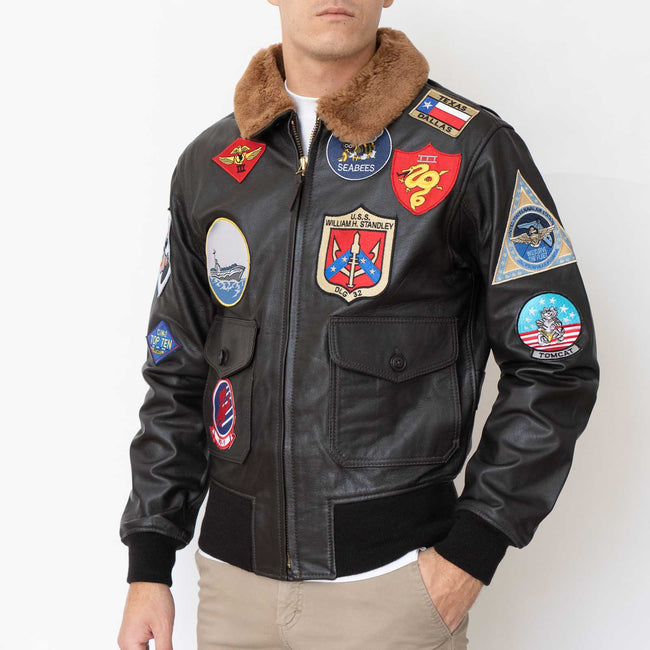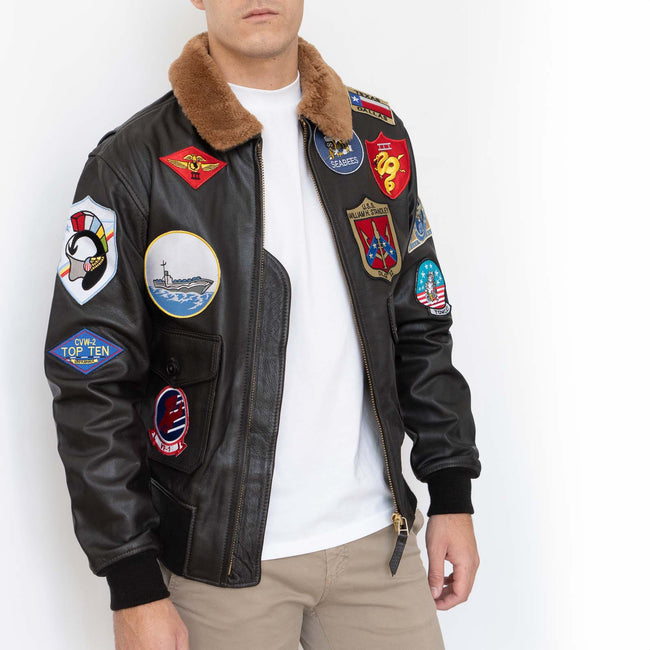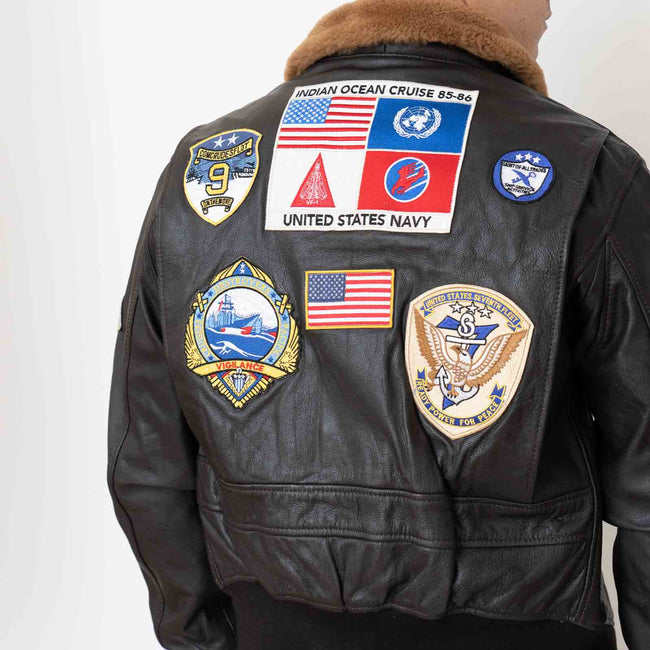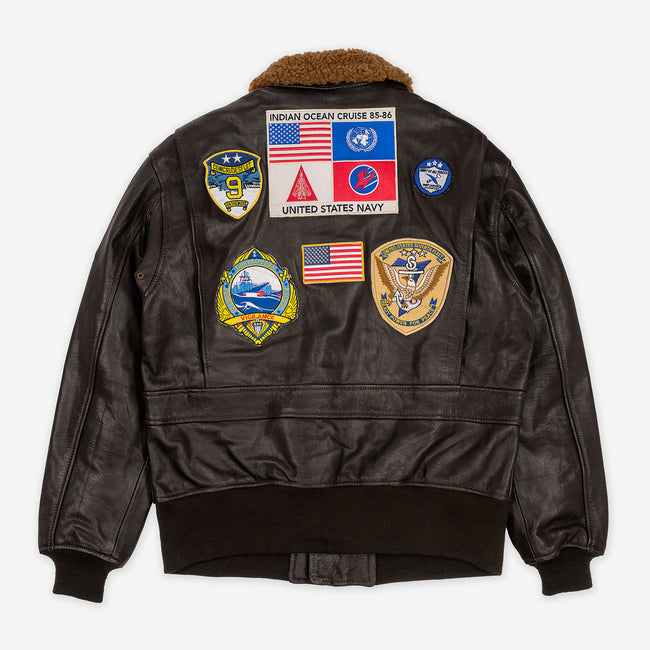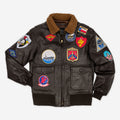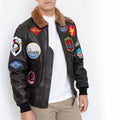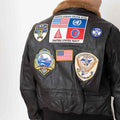Product Details
- Collection: Spring/Summer
- Classic design inspired by US Navy tradition
- Made of dark brown goatskin leather
- 17 patches applied
- Sheepskin collar and front closure with nickel zip
- Two patch pockets with flap and buttons
- Wool waistband and cuffs
- Back slit with underarm reinforcement and side seams
- Rayon satin lining
- The model is 186 cm tall and wears a size Medium
Materials
Size & Fit
Shipping & Returns
HISTORY OF MAVERICK JACKET
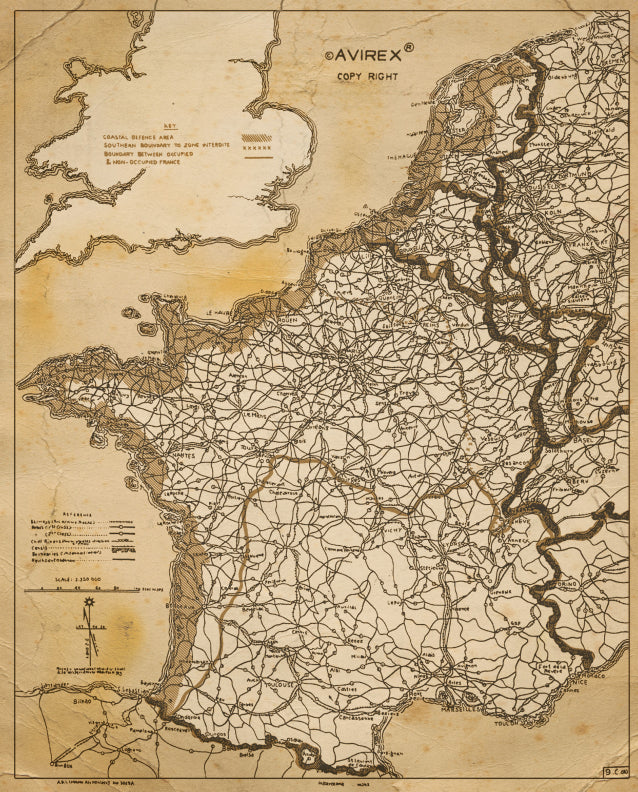
The United States Navy Strike Fighter Tactics Instructor program (SFTI program), more popularly known as TOPGUN, teaches fighter and strike tactics and techniques to selected naval aviators and naval flight officers. It began as the United States Navy Fighter Weapons School, established on 3 March 1969, at the former Naval Air Station Miramar in San Diego, California. The need for a program to hone Navy fighter tactics became clear in the early years of the Vietnam War. Operation Rolling Thunder, which lasted from 2 March 1965 to 1 November 1968, ultimately saw almost 1,000 U.S. aircraft losses in about one million sorties. In 1986 Paramount Pictures produced a movie inspired by the life of the fighter pilots of the SFTI program. TOP GUN was destined to become a cult movie and his protagonist, Pete Maverick Mitchell, interpreted by Tom Cruise, a real icon with his jacket and glasses, heritage of the immortal legend of U.S. Navy fighter pilots. This is the original G1 jacket produced by Avirex and used by Tom Cruise during the shooting of the second movie.



The G-1 leather jacket is perhaps the most iconic of Maverick's clothing, and it has become synonymous with Naval Aviators. This jacket, however, is not just limited to the Navy; it is also issued by the Marine Corps and the Coast Guard to both officers and enlisted aviation personnel on flying status. With its distinctive fur-lined collar, the G-1 is easily distinguishable from its Army/Air Force counterpart, the A-2 leather flight jacket. The roots of the G-1 can be traced back to the M-422 jacket introduced by the Navy in the 1930s and standardized in 1940. In 1942, the jacket was replaced with the more economical M-422A due to wartime material shortages. However, both versions remained visually similar to the G-1 we know today.


During WWII, naval personnel rarely adorned their leather jackets with more than a single patch on the left breast, depicting their name, qualification, and service. Sometimes, a single squadron patch was worn on the right breast. However, personalization with patches did not become widespread until after the war. As depicted by Maverick in Top Gun, G-1 jackets are often personalized with patches that mark deployments, aircraft flown, and significant milestones, such as carrier landings and flight hours.







